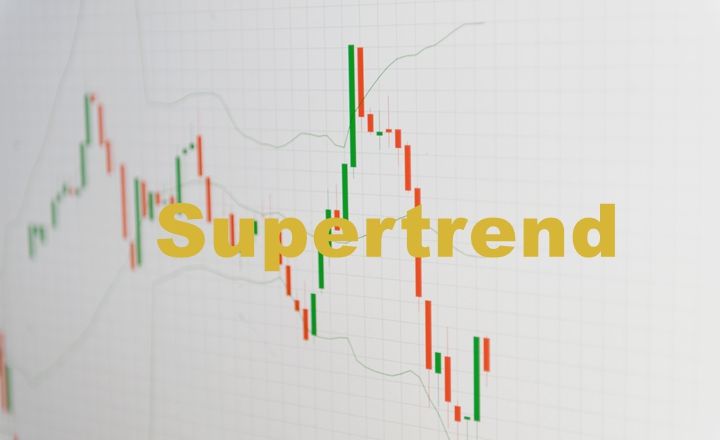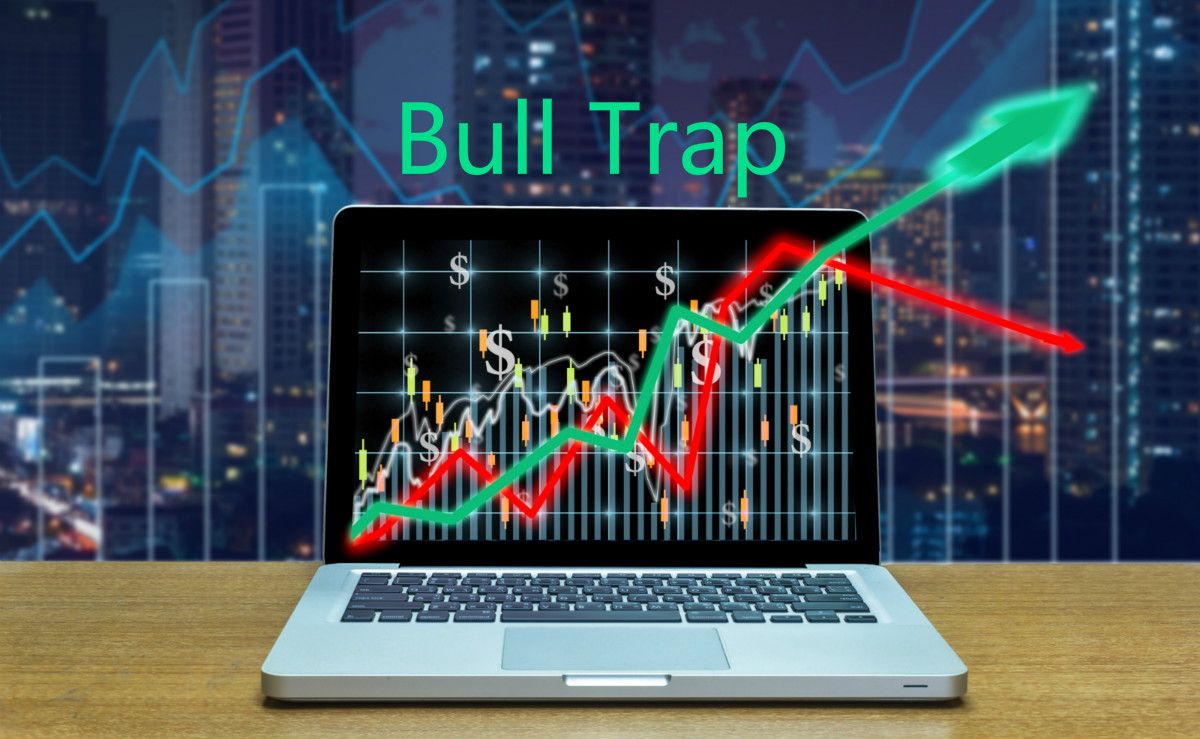How To Use Stop Loss In Forex Trading? Top Myths & Strategies
In forex trading, a stop loss refers to a predetermined level at which you are supposed to exit a losing trade. The stop loss level is usually determined as soon as you enter into the position. The stop loss level is important in forex trading because it is the protection you have against sharp market movements against your open position.
Unfortunately, many traders still struggle with the concept of stop loss placement in forex. This article covers all you need to know about stop-loss, including the top 4 myths about Stop loss and how to use it correctly in forex trading.
Note: You can open a free demo account with Mitrade and use the technical analysis tools to practice your trading strategies without risks. |
Top Myths About Stop Loss in Forex
Myth 1: A Stop Loss is Useless Because a Black Swan Event Will Wipe Everything
A black swan event refers to economic or political events that cause the markets to move aggressively in one or both directions. Black swan events can move the markets by up to 2000 pips in a minute.
The last true black swan event happened in 2015 when the Swiss Central Bank lifted the peg on Swiss Franc. It caused CHF-related pairs to move by up to 2,500 pips. Other major events like the UK Brexit election and the “Fat Finger” move-in Yen-related pairs in 2019 moved the pairs affected by less than 1000 pips.
It is true that the average broker will not honor a stop loss in these situations, but any good trader already knows this. This is why it is important to trade with the right position size. Your stop loss will be triggered at the next available price once the price has reached your specified level. In a black swan event, this could be 500 pips away from where you intended.
However, setting a stop loss ensures that your trade is closed as fast as possible instead of not being closed at all!
For example, if you risked 5% of your account with a 100 pips stop loss on a CHF trade in 2015, and the market moved 500 pips away from your original stop before the broker could close your position, you would have lost 30% of your account. This is massive, but imagine what would have happened if you didn’t have any stop loss at all and the market ran up all the way to 2000 pips. That’s a margin call and a blown account.
Now, if you only risked 1% on the trade with the same calculations, you would have lost only 6% of your account when the stop loss was triggered, with a possible maximum negative excursion of 20% if the market went against you by 2000 pips.
Fortunately, black swan events happen very rarely. The CHF debacle is the best example of such an occasion in the last decade. However, an average high liquidity pair can easily move by 200-300 pips slowly but surely over the course of a trading month.
If you don’t use a stop loss, will your account survive these smaller but more frequent movements?
Myth 2: Brokers Hunt Stop Loss
A truly regulated forex broker will not hunt your stop loss. Why would they risk losing dozens of customers and their licenses for a few dollars?
What many novice traders term as stop-loss hunting, is the widening of spreads during thin liquidity periods such as the few minutes before the end of the New York session, and after the start of the Asian session.
In other cases, the spreads also widen during the release of economic data. If you set your stop loss level too tightly around these periods, it will get triggered regardless of your choice of broker.
Unless you have clear evidence that price movements that triggered your stop loss had nothing to do with these two situations, your broker is not hunting your stop loss.
Myth 3: The Market Will Always Reverse to Take Out Your Stop Loss
This is another common myth perpetuated by traders that are struggling to place stop losses correctly in forex trading The market doesn’t reverse to take out your order first.
If this happens to you regularly, it suggests you are placing your stop loss too tightly or placing it at obvious points where orders may be waiting (more on this below).
If you want the market to stop hitting your stop loss before moving in your intended direction, you have to learn proper stop loss placement in relation to your trading strategy.
Myth 4: It is Best to Set Stop Loss Below Support and Above Resistance Levels
This is perhaps one of the most widely held myths in forex trading. Unfortunately, there is no statistical backing to this.
For every support and resistance level that didn’t give way, there are two others that did. The behavior of the market is such that these obvious areas of price accumulation are targeted regularly.
This is why when you buy at support, the price almost always moves a bit lower before the up move you are expecting begins. All stop losses placed abruptly near the support area will be taken out. The same applies when the price is near resistance.
So what can you do to avoid this? How can you set stop loss levels correctly?
How To Set Stop Loss Correctly in Forex Trading?
To set your stop loss like a professional trader in forex, here’s what you have to do:
1. Determine Your Risk
How much risk are you comfortable with in the position? When you know your risk ahead of time, you can set your stop loss with more conviction. Assuming you are risking 1% of your account per trade, you already know that you can’t lose more than this sum more than 99% of the time. It will make it easier for you to give your trades room to breathe.
2. Look at Your Strategy
If you have a good strategy, you should know when a trade signal is invalidated. If you use a strategy that is based on a Moving Average crossover, for example, your stop loss could be behind the candle that triggered the signal. If you use indicators that have arrows built into them, the stop loss could be behind the arrow that signaled your current direction.
Don’t forget that the timeframe you are trading also plays a role here.
The bottom line is that you should ensure your stop-loss is hit only when a trade setup has been invalidated according to your strategy.
3. Use the Average Daily Range
When you have decided on your risk, and have mapped out where the stop loss should be based on your strategy, the next thing to do is to take a look at the average daily range of the pair or instrument you are trading. This is to ensure that your stop loss level agrees with the volatility potential of the pair.
Many traders that complain about the market hunting their stop loss are fond of using a fixed pip count for their stop loss. This is counterproductive. For example, using a fixed stop loss of 50 pips for the forex pairs, NZDUSD and GBPJPY, will not work because the latter is far more volatile than the former. NZDUSD may not move 50 pips in an entire day of trading, but GBPJPY can move 50 pips in 30 minutes! So a 50 pips stop loss on GBPJPY will most likely get hit before your expected move starts.
So, to ensure you aren’t setting your stop loss too tightly, ensure it agrees with the average daily range (ADR) of the pair over the last ten days at the very least.
4. Use the Right Position Size
When you have mapped out your risk, gauged the right place for a stop loss based on your strategy, and worked out the ADR, the next step is to calculate your position size. The right position size allows you to get the full reward for your risk and ensures you don’t panic when the market is going against you.
Here’s the perfect illustration for placing a stop loss:
John has a $10,000 account and only risks 1% per trade and targets 2% profit. His strategy gave a trading signal on GBPJPY with a possible stop-loss position 60 pips away. However, the ADR of GBPJPY over the last two weeks is 100 pips. To ensure proper stop loss placement, John has to take the trade with 1/10th of a standard lot which is 0.1, to compensate for a possible 100 pips move against him.
If he loses the trade, he’d have lost only $100. However, since John gave enough room for the market to move by giving consideration to the volatility level of GBPJPY, the chances of the stop loss getting hit is much reduced. If John’s trade goes in his favor, he will make $200.
Now, assuming the signal came on a pair like NZDUSD with an ADR of 50 pips over the last two weeks, John can afford to use 0.2 lot size because a 50 pips loss on 0.2 lot size still amounts to 1% of his account ($100). A profit of 100 pips also means $200 or 2% of the account.
Most Important Things To Consider
With these tips, you can set the perfect stop loss in forex trading, away from cluster zones where they are most likely to be hunted. Avoid repeating the poor trading behaviors caused by believing some of the myths we have analyzed above, and you will see a marked improvement in your forex trading results.
Trade with ease on Australia’s Affordable Forex broker-Mitrade
1. How do you choose to stop loss and take profit?
The best way to choose a stop loss and take profit level is to use your forex trading strategy to see where a trade position will become invalid. Ensure the stop loss level you choose is in agreement with the volatility of the pair you are trading by analyzing the average daily range (ADR) of the pair. The ADR can also help you choose a realistic take-profit target. However, many traders allow old positions to run until an opposite trade suggestion appears on the pair.
2. How many pips should my stop loss be?
There is no absolute number of pips for a stop loss. A 20-pip stop loss may work if you are trading a quiet instrument on the lower timeframes. As the volatility of a pair and the time frame in view increases, the number of pips should increase equally.
3. What is the best stop loss percentage?
The best stop-loss percentage is dependent on your trading strategy’s success rate. However, it is beneficial to keep the percentage risk on each stop loss below 2%. This way, even a 10-trade losing streak will still keep your drawdown level below 20%.
------------------
If you want to see trading strategies and free demo trading, please sign up for our multi-asset trading platform. We offer trading on 300+ the world's most popular assets.
Click here to get a free demo!
* The content presented above, whether from a third party or not, is considered as general advice only. This article should not be construed as containing investment advice, investment recommendations, an offer of or solicitation for any transactions in financial instruments.
- Original
- Trading Analysis


Risk Warning: Trading may result in the loss of your entire capital. Trading OTC derivatives may not be suitable for everyone. Please consider our legal disclosure documents before using our services and ensure that you understand the risks involved. You do not own or have any interest in the underlying assets.



.jpg)

